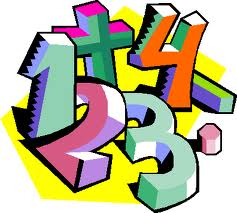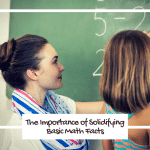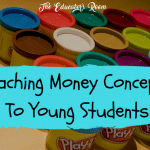 I watched my three year-old, Monkey, coloring with colored pencils this morning. He was testing out the white pencil even though it was on white paper. I knew what was going to happen and I had to resist the urge to tell him not to do it. But I bit my tongue and watched him draw three little circles on the white paper. Slowly a look of confusion replaced the smile on his face as nothing showed up.
I watched my three year-old, Monkey, coloring with colored pencils this morning. He was testing out the white pencil even though it was on white paper. I knew what was going to happen and I had to resist the urge to tell him not to do it. But I bit my tongue and watched him draw three little circles on the white paper. Slowly a look of confusion replaced the smile on his face as nothing showed up.
I smiled and leaned over, “What color is that?” I asked pointing to the colored pencil.
“White,” he quickly replied.
“What color is that?” I asked, this time pointing to the paper.
“White,” Monkey replied again. We talked about how white pencil does not show up on white paper. He tried a few more strokes with the pencil and then switched to a new color. During the rest of his “work time” (that is his word as he has seen Mommy working away on school work at home too often) he did not use the white colored pencil again. Our classroom students come to us with different knowledge and different experiences. It’s our responsibility to bite our tongue and let them learn on their own.
In fourth grade our third unit this year is multiplication. When starting this unit I expect my students to have mastered their facts. I expect them to be accurate and fluid in their multiplication. But, not all students are. Some of them need a refresher and then quickly work back to the mastery and speed they had in third grade. Some, however, do not understand multiplication and they must work though this process as we progress through our unit.
Before the unit I give them opportunities to grab that prior knowledge. I explain my expectations of their knowledge level and mastery of multiplication facts. I give them practice time in class. We also talk about the importance of practice to become a master at anything so I provide websites and communicate with parents the need for daily practice. For students who have not mastered these facts when we start unit three, it is important to practice the strategies and allow them to play games in class to practice their skill. And I remember as we work though our unit they all come to me with different knowledge.
Students need to be able to touch math in order to visualize math and in order to do math. We still use base 10 blocks and manipulatives in fourth grade. Here is a list I work down with students. Some students bring background knowledge that allows them to quickly move through the progression, while others need to spend time mastering each rung of this ladder.
- Our multiplication unit starts with arrays. I have students build block models of each factor pair 1-25.
- We then use grid paper to represent these models. Students draw the array for each factor pair 1-25.
- Finally, we put the equations with the models. Students list all factor pairs written as equations with numbers 1-25.
With repeated practice, at a level that matches their knowledge, students should look for patterns. They may quickly see the repetition of 1 as a factor of every number, 2 as a factor of even numbers and 5 as a factor of numbers that end in 5 or 0. You can lead them to find the pattern of every third number having a factor of 3 and every other even number having a factor of 4. Creating, seeing, practicing and then memorizing the patterns will increase students’ speed and accuracy with multiplication facts.
Multiplication goes beyond facts and moves into larger numbers in fourth grade. Students needs to look at two-, three- and four-digit numbers and be able to multiply them accurately. There are two things that play into this success: fact mastery and place value understanding. Moving into how numbers work together in fact families and the understanding of multiplying numbers by 0, 1 and 10 is the next step. Again, allow students to see how these numbers work.
- We use base 1o blocks to explore the idea of place value.
- Then students move from manipulatives to drawings which represent the numbers and their place value. We draw sets of numbers and arrays.
- Then they use short hand to represent the place value of numbers.
- Finally, we write equations.
It is tempting to push through. The, “You should KNOW this!” come into play. Monkey has colored many times with crayons. He should have known the white pencil would not work, yet he needed to try it. The same thing applies to our students. Skipping a step in this process will only slow children down in the end. Multiplication is a big idea. Students cannot successfully work multi-digit multiplication problems with a procedure. Take the time to allow students to master these steps as needed. Play games and show video clips. Sing songs and have fun. We don’t expect three-year-olds to have complete command over their art. Just as I watched my son test white colored pencils on white paper, we must watch our students practice, fail and then learn the complicated steps of multiplication with our guiding hand along the way.




